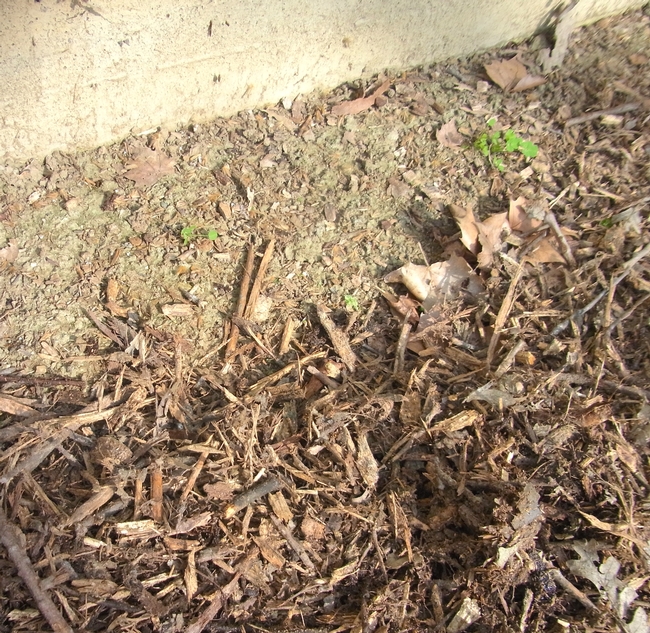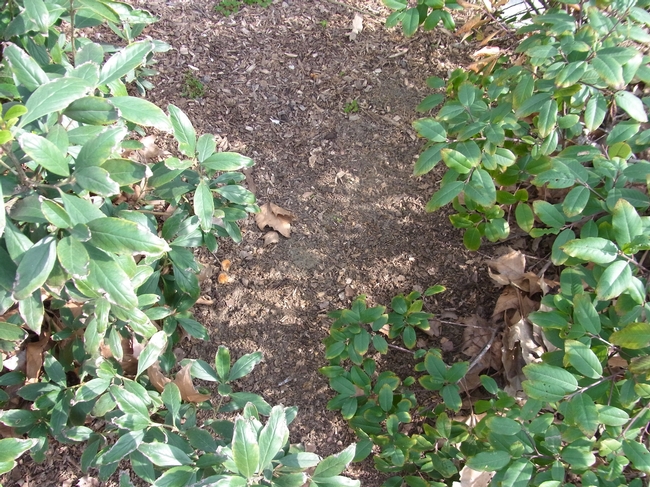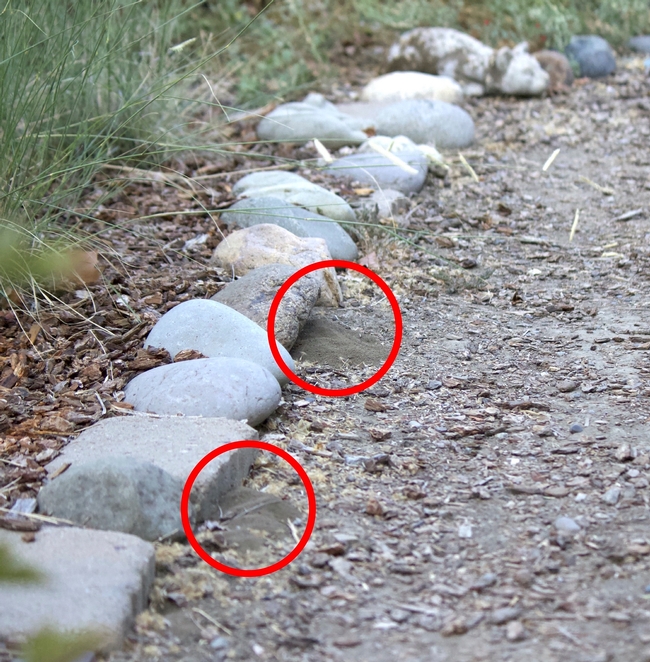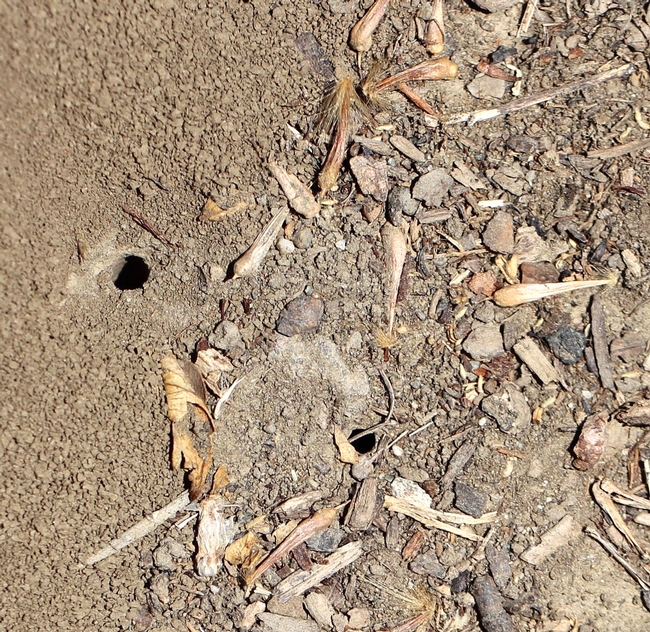- Author: Christine Casey

The only scientific study of the role of mulch in gardens was done by a group at UC Santa Cruz as part of a larger study looking at various garden factors and their influence on bee populations. They found a negative correlation between the area of a garden with mulch cover and the number of bee species (Quistberg et al., Environmental Entomology. 2016, 45(3):592-601).
Of course this doesn't mean you shouldn't use mulch, given its benefits. Here are tips on using mulch while also conserving bee habitat:
- The bare area does not need to be large or visible. For example, a bare strip can be left along the side or back of a garage or between larger shrubs that will hide the area. It's also a good idea to not place mulch directly against tree trunks, which will also leave some bare soil.


- In most of California, ground-nesting bees will be finished their seasonal activity by the end of October. If an area needs to be mulched, delay until then. The new bees should be able to emerge from underneath the mulch the following spring.
- Soil doesn't need to be amended in any way to help bees nest. These bees are native to the area and are adapted to excavate nests in hard, crusty summer soil.
- Some bee species nest along fence rows or other straight lines. They can also prefer to create nests in the shade of stones such as these along a path border.


Some other mulch tips:
- If you see wasps in your mulch pile, it has probably been sitting a while and is starting to ferment, creating alcohol and sugars. This happens due to lack of oxygen. Turn the mulch pile and let it sit a few days before using it.
- Avoid colored mulch. The effect of the dyes in these products on bees in unknown.
- Do not use cocoa bark mulch if you have dogs. It can be poisonous.
- Don't overdo it. An inch or two is plenty.
- Author: Christine Casey
Good horticultural practices are important to the success of any garden. In bee gardens, though, we need to do things a bit differently, as some common practices may not be best for the bees. When most of us think of bees and pollination the managed European honey bee, Apis mellifera, comes to mind. But beyond the honey bee are over 1500 species of bees native to California, many of which provide essential pollination services in both wild and agricultural settings. About 70% of these wild bees live in underground nests. This includes the social bumble bees and solitary bees like the long-horned bees (Melissodes spp.), digger bees (Anthophora spp.) and sunflower bees (Svastra obliqua) that are common in urban gardens.
Three important practices that should be adjusted to accommodate ground-nesting bee habitat are mulching, tillage, and sanitation.
Mulch has many benefits in the garden. It retains soil moisture, can protect against soil temperature extremes, and provides valuable habitat for arthropod predators such as ground beetles (family Carabidae). Ground-nesting bees need bare soil to create their nests, however, so bee gardeners should leave some ground uncovered. Visitors to the Honey Bee Haven will notice that the garden has many areas of sparsely-laid mulch to accomplish this. Turf-covered areas are not used for nesting.
Ground-nesting bees have soil preferences that vary by species. This is an area in which very little research has been done, but we do know that undisturbed soil is essential. Tilling the garden destroys underground bee nests and disrupts abandoned rodent burrows that are important bumble bee nesting sites.
Finally, while sanitation is an essential tactic in garden pest management, it’s important to not be too neat. Small clumps of grass or weeds or debris left under shrubs can protect the bumble bee queen as she overwinters in her nest below. Garden visitors will see that we leave some weed growth on the garden edges to provide this type of habitat.



